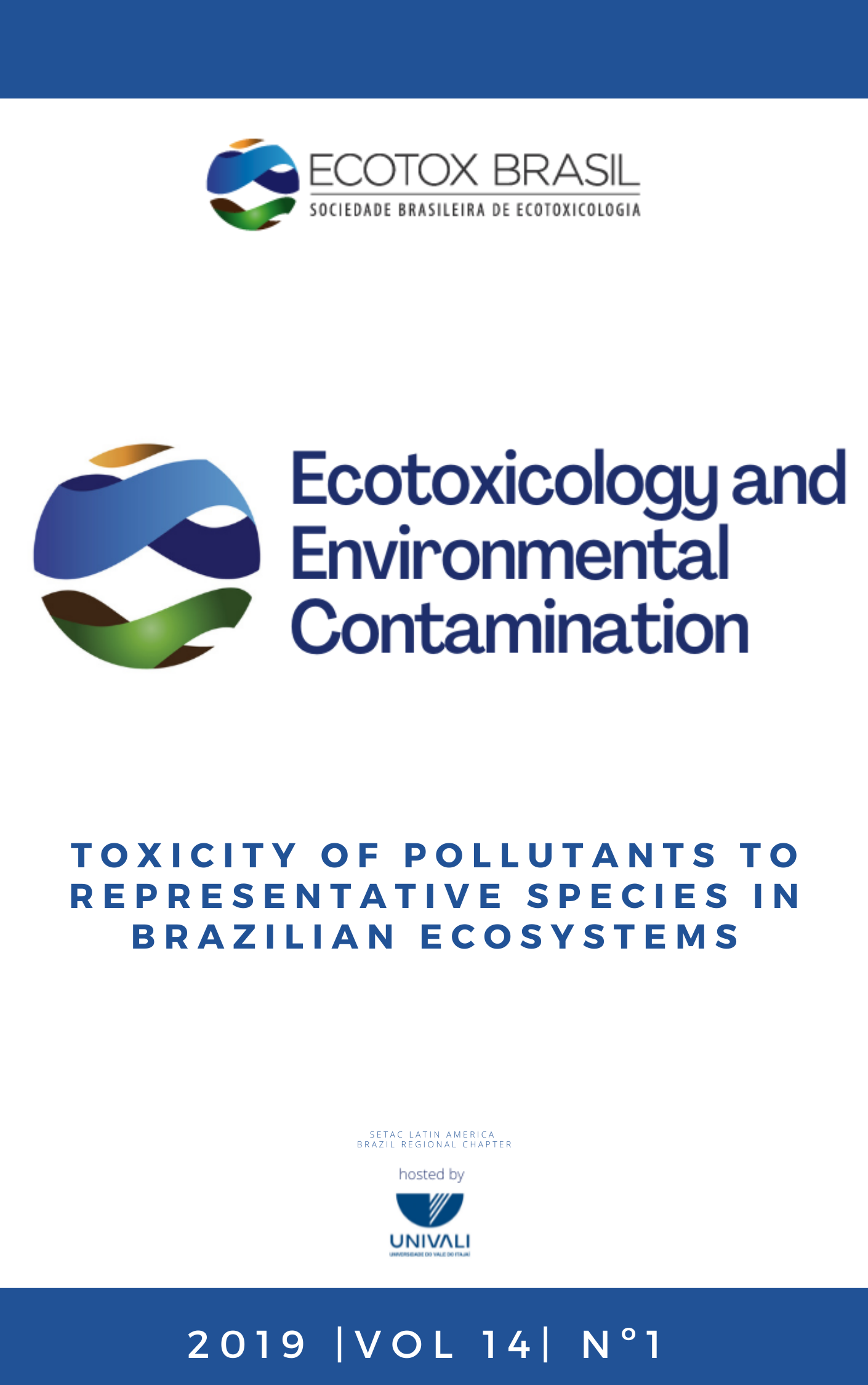Biochemical and genotoxicity assessment of a polluted urban river using the native fish Astyanax altiparanae Garutti & Britski (Teleostei, Characidae)
DOI:
https://doi.org/10.5132/eec.2019.01.09Abstract
Agriculture residues and domestic effluents are contaminants that reach aquatic ecosystems leading to toxic effects to environment and human health. These contaminants impacting mainly developing countries, due to precarious treatment of effluents and lack of legislation in the use of pesticides. Perequê River (South of Brazil) is impacted by pesticides (mainly glyphosate) and domestic effluents. The aims of this study were to analyze the concentration of glyphosate in water and sediments of Perequê River; and to evaluate the sublethal effects of the river contamination in Astyanax altiparanae using biomarkers. A sampling of water, sediment and fish were carried out in Perequê River (November/2016). The samples were collected in two sites, site 1 (S1) that is located on agriculture area and water catchment point; and site 2 (S2) located on the area with a domestic effluents influence. Water and sediment samples were used to glyphosate quantification. Fish were collected and tissues (brain, muscle, liver) were used to biochemical and genetic biomarkers. Glyphosate were quantified in S1, which is impacted by agriculture. Alterations in the liver biomarkers were not observed between the sites. However, the decrease in the AChE activity was observed in the S2, showing that the mixture of contaminants (urban and agriculture contaminants) can lead to anticholinesterasic effects. The sublethal effects observed can be a threat of environmental and human health.
Downloads
Published
How to Cite
Issue
Section
License
Copyright © 2006 ECOTOX-Brasil
Copyright notice: It is a condition for publication that manuscripts submitted to this journal have not yet been published and will not be simultaneously submitted or published elsewhere. By submitting a manuscript, the authors agree that copyright for their article is transferred to the Sociedade Brasileira de Ecotoxicologia (ECOTOX-Brasil) if and when the article is accepted for publication. The copyright covers the exclusive rights to reproduce and distribute articles, including reprints, photographic reproductions or any other reproduction of a similar nature, including translations. No part of this publication may be reproduced, stored in a retrieval system or transmitted in any form or by any means, electronic, mechanical, photocopying, recording or otherwise, without permission of the publisher.
Notice: While every effort is made by the EEC, editors and editorial board to see that no inaccurate or misleading data, opinions or statements appear in this journal, they wish to make it clear that the contents of the articles and advertisements published herein are the sole responsibility of the contributors or advertisers concerned. Accordingly, the EEC, the editorial board and editors and their respective employees, officers and agents accept no responsibility or liability whatsoever for the consequences of any inaccurate or misleading data, opinion or statement.




